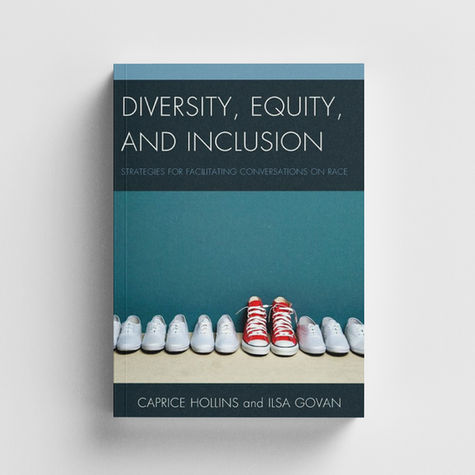Diversity, Equity, and Inclusion: Strategies for Facilitating Conversations on Race
New Edition Coming in 2026.
Join our Brave Space Builders List!
Join our Brave Space Builders list to receive sneak peeks of new content until the new edition of our book is released. Email Judy at judy.lee@culturesconnecting.com to join.
To make room for our new edition, this edition of the book is on clearance for $25!
NOTICE
We believe in the value of the USPS and want to continue to support them. However, due to recent budget cuts to this important government service, we are unable to estimate when you will receive your order. If you need your order right away we can arrange to have it shipped to you through other methods at an additional cost. Otherwise, please try to order in advance when possible.
All orders through USPS will be shipped via Registered Mail so we are able to track the order in the instance that your package is delayed or lost.
Facilitating conversations about race often involves tension, as both the facilitators and participants bring emotional experiences and their deeply held values and beliefs into the room.
Diversity, Equity and Inclusion: Strategies for Facilitating Conversations on Race guides facilitators through a process of becoming comfortable with the discomfort in leading conversations about racism, privilege and power.
This book walks you through the important steps to create a foundation where participants feel brave enough to take risks and share their stories and perspectives. It guides you through strategies for engaging participants in courageous conversations with one another in ways that don’t shame and blame people into understanding. This book is a useful tool for individuals, organizations and college professors who are interested in learning techniques for guiding their audience through dialogue whereby they become open to listening to one another for understanding rather than holding on to old beliefs and maintaining a posture of defense.
Readers will learn how the dynamics of race show up in cross cultural spaces, including the unique challenges faced by facilitators of color and white facilitators. In addition, we explore how to identify and counter white privilege in the dialogue between participants.
Both novice and experienced facilitators will learn helpful strategies for leading conversation that result in people recognizing their role as change agents in ending oppression.
About the Authors

Dr. Caprice Hollins is co-Founder of Cultures Connecting. She received a B.A. in psychology from Seattle University and M.A. and Psy.D. degrees in Clinical Psychology with an emphasis in Multicultural and Community Psychology from California School of Professional Psychology―LA. She became licensed in Washington State in 2000 and has over 20 years of experience studying and working with ethnically diverse populations. Her experience includes opening and Directing the Department of Equity & Race Relations for Seattle Public Schools.
Dr. Hollins spent 20 years at the Seattle School of Theology & Psychology where she was an Affiliate Professor in the Counseling Department. She works hard to balance her passion and commitment to equity and social justice while at the same time raising a family with her husband, Gary Hollins.

Ilsa Govan has more than 15 years of experience as a facilitator, consultant, writer and social justice activist. She has led conversations about racial equity at workshops and conferences across the country and helps coordinate the white caucus at the annual national White Privilege Conference. Prior to Cultures Connecting, Ilsa worked as an Equity and Race Specialist for Seattle Public Schools where she was tasked with addressing institutional racism in a large organization.
She earned her Bachelor's Degree in Special Education from Western Washington University and her Master's Degree in Bicultural Human Development from Pacific Oaks College Northwest. Ilsa is deeply invested in examining how her own identity influences her interactions with others, particularly through the lens of privilege and oppression.




